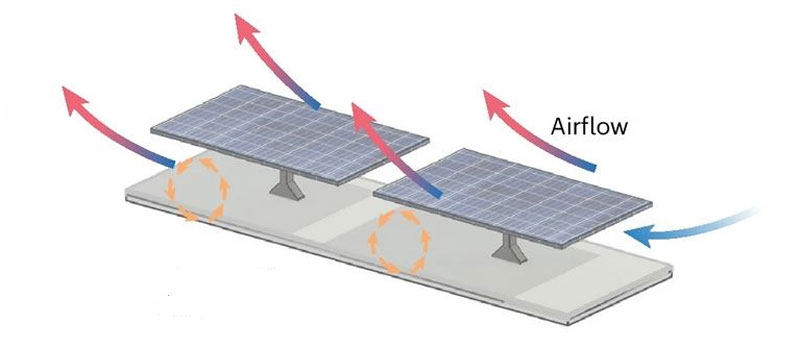A new set of models and field tests in cities in India, Australia, the United States and Europe have shown that placing solar panels on rooftops in cities improves air mixing and cleaner air at ground level, as well as making days warmer and nights cooler.

Image source: University of Calcutta
An international team of scientists from India, Australia, the United States and Europe conducted the first comprehensive study of its kind on the impact of rooftop solar photovoltaic installations on the urban climate. But the most valuable thing in the study was the creation of the most complete digital model to assess the impact of solar panels on the microclimate of cities.
The calculation tool proposed by the scientists uses the latest Weather Research and Forecasting (WRF) model, integrating a building energy model (BEM) and building effect parameterization (BEP). The model was tested at ten observation sites in Kolkata (India) using experimentally obtained data.
«Although existing literature reports on the impacts of RPVSP [rooftop solar installations] on urban environments, most are based on specific field experiments or building-scale modeling, without comprehensive multi-city scale analyses. These studies also did not take into account convective heat transfer between the roof surface and the bottom of the solar panels, the scientists explained. “Our work addresses these gaps by incorporating new parameters for RPVSP, including convective heat transfer, resulting in more consistent results with other studies incorporating similar considerations.”
In Kolkata, 5 experiments were carried out during one of the hottest months. The reflectivity of the bare roof (albedo) was taken as 0.15. During the experiment, options were explored for covering city roofs with solar installations at the level of 0.25, 0.50, 0.75 and 1.0 area. The panel albedo, conversion efficiency and emissivity were set at 0.11, 0.19 and 0.95, respectively.
The technique was tested first in Kolkata and then validated in Sydney (Australia), Austin (USA, Texas), Athens (Greece) and Brussels (Belgium) to ensure that the results are not limited to a specific climate zone. It turned out that placing solar panels on the roofs of houses in cities increases daytime temperatures at ground level by 1.1–1.9 °C (more in some places, less in others). Also, panels on the roofs contribute to the fact that at night the air temperature at ground level becomes slightly lower – by 0.3-0.8 °C.
Finally, and most significantly, rooftop panels intensify the mixing of air on city streets, which raises the so-called planetary boundary layer – the lowest part of the atmosphere directly affected by the Earth’s surface – to a height of 615.6 m. This reduces air pollution levels at land, which can be considered a benefit for cities and their inhabitants.